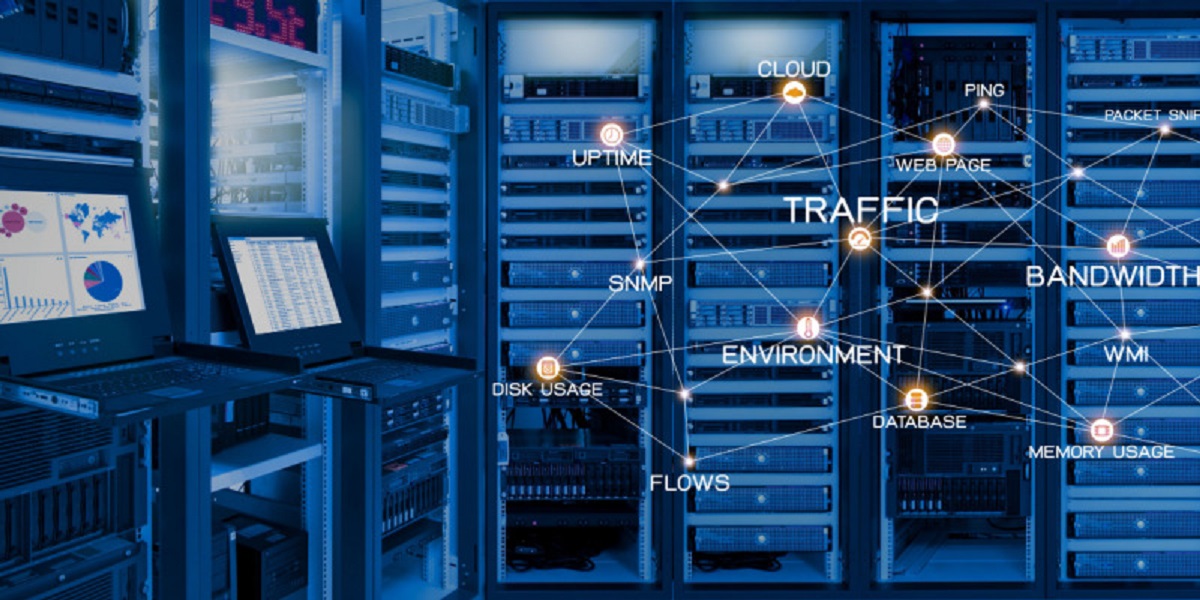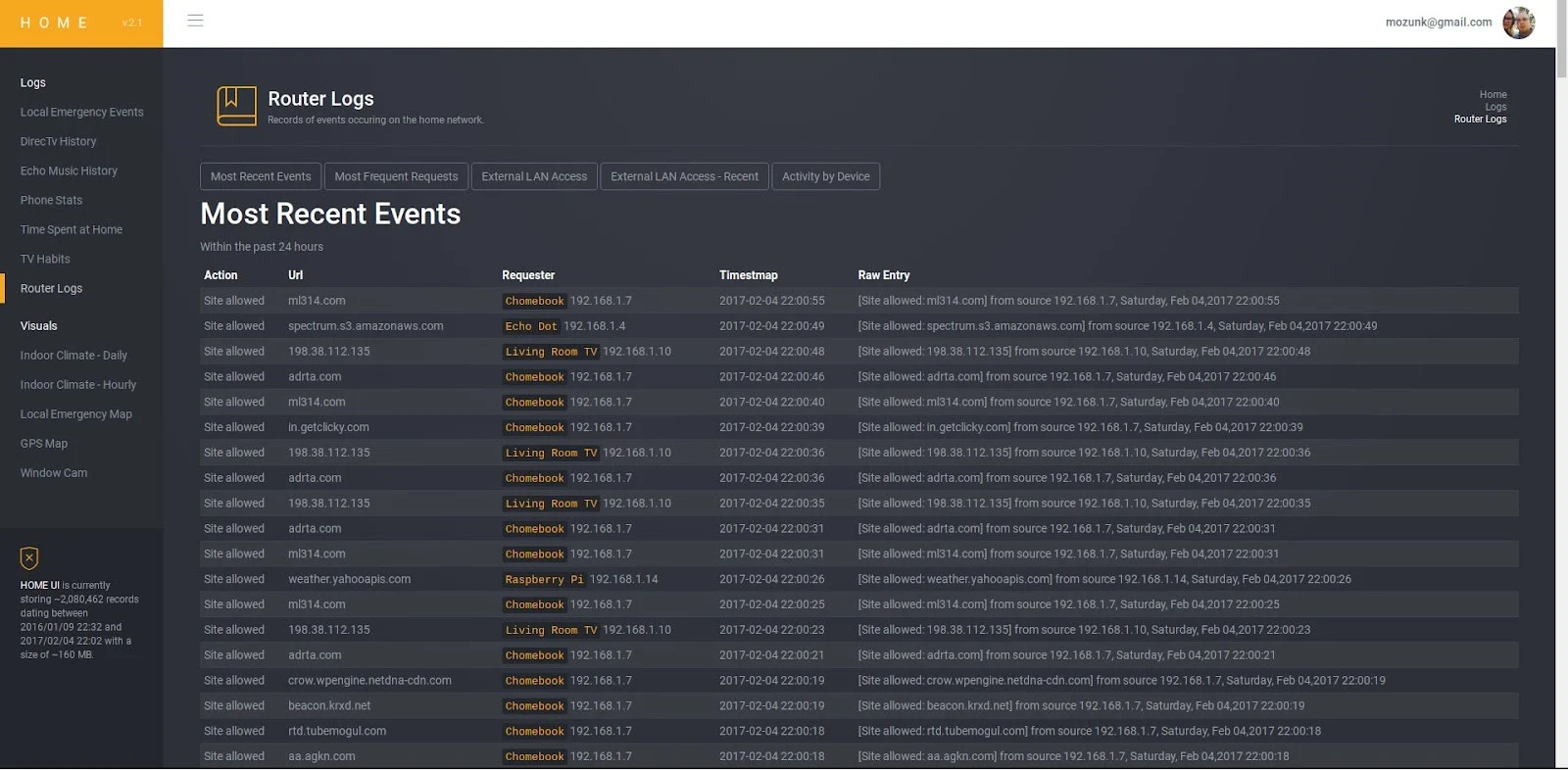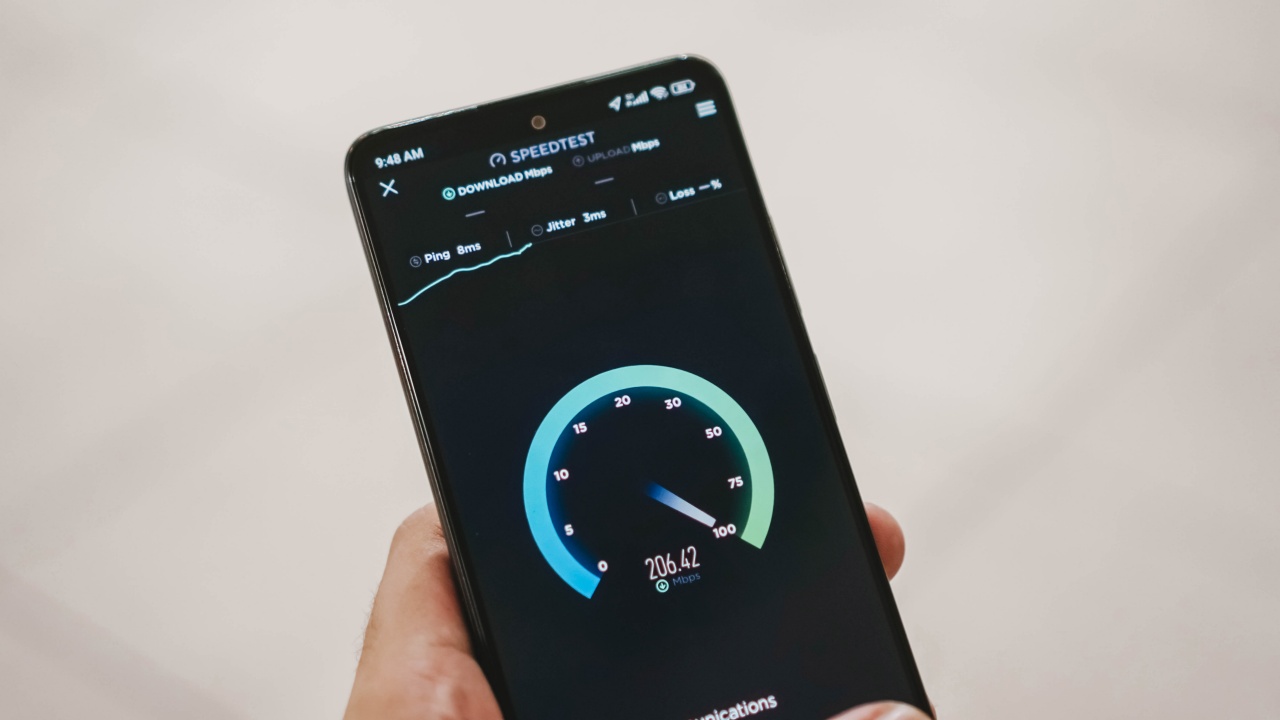Introduction
Network monitoring is a crucial process in today’s digital landscape. As businesses increasingly rely on the internet and connected devices for their operations, ensuring the stability, performance, and security of the network infrastructure becomes paramount. Network monitoring involves the continuous surveillance and analysis of network activities to detect and resolve any issues that may arise.
With an effective network monitoring solution in place, businesses can proactively identify and address potential bottlenecks, vulnerabilities, and security threats, minimizing downtime and maximizing productivity. Whether it’s monitoring network performance, availability, bandwidth usage, or security, the right network monitoring tools and strategies offer invaluable insights into the health and efficiency of an organization’s network.
In this article, we will explore the importance of network monitoring and delve into the various types of network monitoring tools available. Additionally, we will discuss the key features to consider when selecting a network monitoring tool, along with best practices for setting up and optimizing network monitoring in your organization.
By implementing an effective network monitoring strategy, businesses can proactively manage their networks, mitigate risks, and ensure smooth operations. So, let’s dive in and discover how network monitoring can help businesses stay ahead in an increasingly connected world.
Why is Network Monitoring Important?
Network monitoring is an essential component of maintaining a reliable and secure network infrastructure. Here are some key reasons why network monitoring is important:
1. Early Detection of Issues: Network monitoring allows businesses to identify and address network issues before they escalate into more significant problems. By proactively monitoring network performance and availability, IT teams can detect slow connections, high latency, or potential hardware failures and take timely action to prevent downtime or interruptions in service.
2. Improved Network Performance: Network monitoring tools provide valuable insights into network performance, allowing businesses to optimize network resources. By analyzing network traffic patterns and bandwidth usage, IT teams can identify bottlenecks, optimize network configurations, and allocate resources more efficiently, resulting in improved network performance and faster data transfer speeds.
3. Enhanced Security: Network monitoring helps organizations stay one step ahead of potential security threats. By detecting and alerting IT teams about unauthorized access attempts, anomalies in network traffic, or suspicious activities, businesses can quickly investigate and respond to potential security breaches. Timely identification and resolution of security issues help protect sensitive data, maintain compliance with regulations, and minimize the risk of data breaches or network intrusions.
4. Reduced Downtime: Network downtime can cost businesses significant financial losses and damage their reputation. With network monitoring in place, IT teams can proactively identify network issues, such as hardware failures or network congestion, and take immediate action to resolve them. By minimizing downtime and maintaining high network availability, businesses can ensure uninterrupted operations, employee productivity, and customer satisfaction.
5. Capacity Planning: Network monitoring tools provide valuable insights into resource utilization and capacity planning. By analyzing network traffic patterns and bandwidth usage, businesses can anticipate future growth needs, identify potential bottlenecks, and allocate resources accordingly. This proactive approach to capacity planning helps businesses scale their network infrastructure efficiently and avoid costly upgrades or performance issues.
Overall, network monitoring plays a vital role in optimizing network performance, ensuring network security, and minimizing downtime. By implementing a comprehensive network monitoring strategy, businesses can reduce operational costs, improve productivity, and enhance the overall user experience. Monitoring network health and performance should be a top priority for any organization seeking to stay competitive in today’s digital landscape.
Types of Network Monitoring Tools
Network monitoring tools come in various forms, each serving specific purposes in monitoring and analyzing network activities. Here are some common types of network monitoring tools:
- SNMP-based Monitoring Tools: Simple Network Management Protocol (SNMP) is a commonly used protocol for managing and monitoring network devices. SNMP-based monitoring tools can collect SNMP data from network devices, such as routers, switches, and servers, to monitor their performance, status, and utilization. These tools often provide real-time monitoring and alerting capabilities.
- Packet Sniffing Tools: Packet sniffers capture and analyze network traffic, providing detailed insights into packet-level data. These tools allow IT teams to monitor network activity, detect bandwidth-intensive applications, troubleshoot network issues, and identify potential security threats. Packet sniffers can be valuable in capturing and analyzing packets for performance monitoring and troubleshooting purposes.
- Flow-based Monitoring Tools: Flow-based network monitoring tools collect and analyze the flow data generated by network devices. Flow data contains information about the source and destination IP addresses, ports, protocols, and traffic volume. These tools use flow data to provide insights into network performance, bandwidth usage, and application statistics. Flow-based monitoring is commonly used in large networks to gain visibility into network traffic patterns and identify anomalies.
- Application Performance Monitoring (APM) Tools: APM tools focus on monitoring the performance and availability of applications running on the network. These tools can track response times, transaction volumes, and resource utilization within an application. APM tools often have features like code-level diagnostics, user experience monitoring, and real-time performance analytics to identify issues and optimize application performance.
- Security Information and Event Management (SIEM) Tools: SIEM tools combine security event management and log management functionalities to provide centralized monitoring of security-related events and incidents. SIEM tools collect and correlate logs from various network devices, servers, and applications to detect and respond to potential security threats. These tools often utilize machine learning and rule-based systems to identify anomalies and generate alerts for further investigation.
Each type of network monitoring tool brings unique capabilities to the table. Depending on the specific monitoring requirements of an organization, a combination of these tools may be used to achieve comprehensive network visibility, performance optimization, and security management.
Key Features to Look for in Network Monitoring Tools
When selecting network monitoring tools, it is important to consider the following key features to ensure they meet your organization’s monitoring requirements:
- Real-time Monitoring and Alerting: Look for tools that provide real-time monitoring capabilities, allowing you to track network performance and receive immediate alerts when issues arise. The ability to set customizable thresholds for performance metrics and receive notifications via email, SMS, or other channels ensures prompt response and minimizes downtime.
- Network Visualization: Network monitoring tools with visualization capabilities help you gain a comprehensive view of your network infrastructure. This includes network topology maps, device status, and traffic flow visualizations. Visual representations make it easier to identify bottlenecks, pinpoint problematic areas, and understand the overall network health.
- Historical Reporting and Trend Analysis: Historical reporting and trend analysis features allow you to analyze network data over time. Look for tools that provide detailed historical reports, graphs, and trend analysis to identify patterns, track network performance trends, and plan for future capacity requirements.
- Scalability: Consider tools that can scale with your growing network infrastructure. Ensure that the monitoring solution can handle a large number of devices, interfaces, and traffic volumes without compromising performance. Scalability is crucial for accommodating business growth and evolving network requirements.
- Customizable Dashboards and Reports: Look for tools that offer customizable dashboards and reports tailored to your specific monitoring needs. Customization options allow you to prioritize and present essential information in a format that suits your organization’s requirements and stakeholders.
- Integration Capabilities: Ideally, choose network monitoring tools that seamlessly integrate with other systems and tools that your organization uses. Integration capabilities enable cross-platform collaboration, streamline workflows, and facilitate centralized reporting and management.
- Support for Multiple Protocols: Consider tools that support various network protocols, such as SNMP, NetFlow, sFlow, or JFlow. This ensures compatibility with a wide range of network devices and allows you to gather data from diverse sources for comprehensive monitoring and analysis.
By focusing on these key features, you can select network monitoring tools that align with your organization’s monitoring goals, effectively monitor network performance, and proactively address issues before they impact your network infrastructure and operations.
Setting Up Network Monitoring
Setting up network monitoring requires careful planning and implementation to ensure optimal performance and effectiveness. Here are some key steps to follow when setting up network monitoring:
- Define Monitoring Goals: Clearly define your monitoring goals and objectives. Determine what aspects of your network infrastructure you want to monitor, such as performance, availability, security, or bandwidth usage. This will help you choose the appropriate monitoring tools and strategies.
- Identify Critical Network Components: Identify the critical network components that are vital to your organization’s operations. This may include routers, switches, servers, firewalls, or specific applications. Prioritize these components for monitoring and ensure that you have the necessary permissions and access to monitor them effectively.
- Choose Suitable Monitoring Tools: Select network monitoring tools that align with your monitoring goals and requirements. Consider factors such as the types of monitoring tools discussed earlier, scalability, ease of use, and integration capabilities. Evaluate different tools through trials or demos to ensure they meet your specific needs.
- Configure Monitoring Parameters: Set up the required monitoring parameters for each network component. Define the performance thresholds, desired alerting mechanisms, and critical metrics that you want to monitor. This may include CPU utilization, memory usage, response times, or bandwidth utilization. Adjust these parameters based on your organization’s specific needs.
- Deploy Monitoring Agents: Install and configure monitoring agents or software on the network devices or servers you wish to monitor. These agents will collect data and send it back to the central monitoring system for analysis. Ensure that you follow best practices for agent deployment to minimize any performance impact on the monitored devices.
- Create Dashboards and Reports: Set up dashboards and reports in your monitoring tool to visualize and analyze the collected data. Customize the dashboards to display the most relevant information, such as real-time network status, performance metrics, and alerts. Generate regular reports to gain insights into network trends, usage patterns, and areas for improvement.
- Establish Alerting Mechanisms: Configure alerting mechanisms to receive notifications when network issues occur. Define appropriate thresholds for different metrics and set up alerts to be sent via email, SMS, or other communication channels. Ensure that the alerting mechanisms are reliable and promptly notify the appropriate IT personnel or teams for timely response and resolution.
- Regularly Monitor and Fine-tune: Continuously monitor the network using the established monitoring tools and strategies. Regularly check the dashboards, review the reports, and analyze the collected data for potential performance bottlenecks, security threats, or any anomalies. Fine-tune the monitoring parameters, thresholds, and alerts periodically to maintain the relevance and accuracy of your network monitoring.
By following these steps and establishing a robust network monitoring infrastructure, you can proactively monitor your network, identify potential issues, and ensure the smooth and reliable operation of your organization’s network infrastructure.
Monitoring Network Performance and Availability
Monitoring network performance and availability is crucial to ensure the smooth operation of your network infrastructure. Here are some key aspects to consider when monitoring network performance and availability:
- Bandwidth Utilization: Track and analyze the utilization of your network’s bandwidth. Identify peak usage periods, monitor traffic patterns, and determine whether network resources are being efficiently allocated. By understanding bandwidth utilization, you can optimize network performance and identify potential bottlenecks.
- Latency and Response Times: Monitor latency and response times to ensure that network devices and applications are performing optimally. High latency or slow response times can lead to performance issues and degrade user experience. Regularly measure and analyze these metrics to identify any performance degradation and take appropriate action.
- Packet Loss and Errors: Keep an eye on packet loss and errors occurring within your network. Excessive packet loss or errors can indicate underlying network issues that may impact performance and availability. Monitoring these metrics allows you to proactively troubleshoot connectivity problems and ensure reliable data transmission.
- Network Device Health: Monitor the health and status of network devices such as routers, switches, and servers. Track critical performance metrics such as CPU and memory utilization, temperature, and fan speeds. By monitoring device health, you can identify potential hardware issues or capacity limitations before they impact network performance or cause failures.
- Service and Application Availability: Monitor the availability and performance of important services and applications running on your network. Set up synthetic transactions or probes to simulate user interactions and measure service responsiveness. By monitoring service and application availability, you can identify performance bottlenecks, optimize resources, and ensure a seamless user experience.
- Network Uptime: Track the uptime of your network to ensure that it is consistently available to users. Monitor downtime incidents and analyze their causes to implement preventive measures. Minimizing network downtime is crucial to maintain uninterrupted business operations and customer satisfaction.
- Capacity Planning: Use historical data and trend analysis to plan for future network capacity needs. Monitor network performance over time, identify growth patterns, and project resource requirements. This helps you plan for upgrades and ensure scalability as your network evolves.
By monitoring network performance and availability, you can proactively identify and address issues that impact the performance and reliability of your network. Regular monitoring, analysis of performance metrics, and prompt response to network issues will help optimize network performance and ensure seamless operations.
Detecting and Resolving Network Issues
Detecting and resolving network issues in a timely manner is essential to ensure the smooth operation and reliability of your network infrastructure. Here are some key steps to effectively detect and resolve network issues:
- Monitor Network Traffic: Continuously monitor network traffic to identify any abnormal patterns or spikes in activity. Anomalies in network traffic can indicate potential security threats, network congestion, or bandwidth issues. By closely monitoring network traffic, you can promptly detect and investigate any irregularities.
- Set Up Alerts and Notifications: Configure alerts and notifications in your network monitoring tools to receive real-time notifications when network issues arise. Set thresholds for performance metrics and configure alerts to be sent via email, SMS, or other communication channels. This ensures that you are promptly alerted and can initiate actions for resolution.
- Implement Network Diagnostics: Utilize network diagnostic tools to troubleshoot and pinpoint the root cause of network issues. These tools can help analyze network connectivity, test network paths, and identify potential problems. By using network diagnostics, you can expedite the troubleshooting process and minimize downtime.
- Collaborate with IT Teams: Foster collaboration between different IT teams, such as network administrators, system administrators, and security teams. Encourage effective communication and sharing of information regarding network issues. This cross-functional collaboration ensures a holistic approach to problem-solving and speeds up the resolution process.
- Document and Follow Standard Operating Procedures: Establish standard operating procedures (SOPs) for detecting and resolving network issues. Document the steps to be followed when troubleshooting specific types of issues, including any known workarounds or fixes. Having well-documented SOPs ensures consistency and efficiency in resolving network issues.
- Track and Analyze Network Logs: Regularly review and analyze network logs to identify any patterns or log entries that may point to network issues. Logs provide valuable insights into system events, errors, and the overall health of your network. Analyzing network logs can help diagnose issues and take preventive measures to avoid future incidents.
- Implement Change Management: Follow a disciplined change management process when making changes to the network infrastructure. Assess the potential impact of changes, develop rollback plans, and conduct thorough testing. By implementing proper change management protocols, you can minimize the risk of network issues and ensure a controlled and consistent network environment.
- Utilize Vendor Support: Engage vendor support when encountering severe or complex network issues. Leverage their expertise and knowledge base to troubleshoot and resolve problems. Vendor support can provide guidance, assistance, and troubleshooting steps specific to your network devices or software.
By following these steps and incorporating a proactive and systematic approach to detecting and resolving network issues, you can minimize downtime, enhance network performance, and ensure a reliable and stable network infrastructure.
Analyzing Network Traffic and Bandwidth Usage
Effective analysis of network traffic and bandwidth usage is crucial for optimizing network performance and resource allocation. Here are some key aspects to consider when analyzing network traffic and bandwidth usage:
- Identify Peak Traffic Periods: Analyze network traffic patterns to identify peak usage periods. By understanding when network activity is high, you can allocate resources accordingly and optimize the performance of critical applications and services.
- Monitor Bandwidth Utilization: Track and monitor the utilization of network bandwidth. Identify applications or users consuming excessive bandwidth and causing network congestion. Analyze this data to prioritize network resources, apply Quality of Service (QoS) policies, and ensure optimal performance for critical applications.
- Identify Bandwidth-Intensive Applications: Analyze network traffic data to identify bandwidth-intensive applications. This information helps in optimizing network resources, identifying potential bottlenecks, and implementing bandwidth shaping or traffic prioritization techniques.
- Detect Anomalies and Security Threats: Analyzing network traffic can help identify suspicious or anomalous activities within the network. Look for patterns that may indicate security threats, such as unusual data transfers, unauthorized access attempts, or communication with suspicious IP addresses. Detecting and responding to these threats promptly ensures the security and integrity of your network.
- Optimize Network Configurations: Analyze network traffic data to optimize network configurations. Identify suboptimal network settings, such as improper routing, excessive collisions, or inefficient firewall rules. By fine-tuning network configurations, you can enhance network performance, minimize latency, and improve overall network efficiency.
- Capacity Planning: Analyze historical network traffic data to forecast future bandwidth and capacity needs. Identify trends and patterns to anticipate growth requirements and plan for network expansion. This proactive capacity planning helps ensure that your network can handle increasing demands without performance degradation or congestion.
- Identify Unauthorized or Non-Compliant Applications: Analyzing network traffic allows you to identify unauthorized or non-compliant applications being used within the network. This helps enforce company policies, manage software licenses, and ensure compliance with regulatory requirements.
- Monitor Cloud-Based Services: If your organization utilizes cloud-based services, analyzing network traffic can provide insights into their performance and usage. You can monitor the latency, response times, and bandwidth utilization of these services to ensure optimal performance and identify any issues that may arise.
By effectively analyzing network traffic and bandwidth usage, you can optimize network performance, allocate resources efficiently, proactively address security threats, and make informed decisions about network investments and capacity planning.
Monitoring Network Security
Monitoring network security is crucial for protecting sensitive data, preventing unauthorized access, and maintaining the integrity of your network infrastructure. Here are key considerations for monitoring network security:
- Network Penetration Testing: Conduct regular network penetration tests to identify vulnerabilities and weaknesses in your network. These tests simulate real-world attacks and help uncover potential entry points for hackers. By conducting regular tests, you can proactively address vulnerabilities and strengthen your network security defenses.
- Real-time Threat Detection: Utilize intrusion detection systems (IDS) and intrusion prevention systems (IPS) to monitor network traffic in real-time. These systems detect and alert you to potential security threats, such as unauthorized access attempts, malware infections, or suspicious activities. Real-time threat detection allows for immediate response and mitigation of security risks.
- Analyzing Network Logs: Regularly analyze network logs to identify security events, anomalies, or patterns that may indicate security breaches. Log analysis can provide insights into activities such as failed login attempts, unauthorized access, or unusual data transfers. Analyzing network logs helps detect and respond to security incidents promptly.
- Monitor Access Controls: Monitor user access controls and privileges to ensure that only authorized users have appropriate access rights within the network. Regularly review user access logs, permissions, and account privileges to identify any unauthorized or suspicious activities. Monitoring access controls helps prevent data breaches and insider threats.
- Behavioral Analysis: Utilize security tools that incorporate behavioral analysis to identify abnormal user or network behavior. These tools analyze patterns and behavior deviations to recognize potential security threats, such as data exfiltration or insider attacks. Behavioral analysis enhances your ability to detect and respond to advanced threats.
- Vulnerability Scanning: Perform regular vulnerability scans to identify potential weaknesses in your network infrastructure. Use automated vulnerability scanning tools to detect known vulnerabilities in network devices, software, or configurations. By regularly scanning for vulnerabilities, you can address them before they are exploited by attackers.
- Continuous Monitoring: Establish continuous monitoring processes to ensure ongoing visibility into network security. Implement security monitoring tools that provide real-time visibility into network events, suspicious activities, or potential security breaches. By continuously monitoring your network, you can identify and respond to security incidents promptly.
- Patch Management: Develop and implement a robust patch management strategy to keep network devices and software up to date with the latest security patches. Regularly check for vendor updates and security patches, and apply them promptly to address known vulnerabilities. Effective patch management helps protect your network from known security threats.
By monitoring network security through proactive measures, real-time threat detection, and robust security tools, you can minimize the risk of security breaches, protect sensitive data, and ensure the overall integrity of your network infrastructure.
Best Practices for Network Monitoring
Implementing best practices for network monitoring ensures the effectiveness and efficiency of your network monitoring strategy. Here are key best practices to follow:
- Define Clear Monitoring Objectives: Clearly define your monitoring objectives and align them with your organization’s goals. Identify the key metrics, performance indicators, and areas of focus that are essential for your network monitoring efforts.
- Establish Baseline Performance: Establish a baseline of normal network performance for comparison when monitoring. By understanding what constitutes normal performance, you can quickly identify deviations or anomalies that may indicate potential issues.
- Focus on Relevant Metrics: Choose metrics that are relevant to your specific network monitoring goals. Too many irrelevant metrics can lead to information overload and distract from the key factors that impact network performance and availability.
- Regularly Update Monitoring Tools: Keep your network monitoring tools up to date with the latest versions and patches. Regularly check for vendor updates and security patches, and apply them promptly to ensure optimal performance and security of your monitoring infrastructure.
- Monitor Both Real-time and Historical Data: Combine real-time monitoring with historical data analysis for a comprehensive view of your network’s performance. Real-time monitoring provides immediate alerts and response, while historical data analysis helps identify long-term trends and patterns.
- Ensure Scalability: Consider the scalability of your network monitoring tools and infrastructure. Ensure that your monitoring solution can handle the increasing volume of network devices, traffic, and data without sacrificing performance or compromising the quality of monitoring.
- Regularly Review and Refine Monitoring Parameters: Continuously review and refine your monitoring parameters, thresholds, and alerting mechanisms. Adjust them based on changing network conditions, business requirements, and insights gained from analyzing the collected data.
- Establish Communication and Collaboration: Foster open communication and collaboration between IT teams, network administrators, system administrators, and security personnel. This cross-functional collaboration ensures a holistic approach to network monitoring and facilitates efficient issue resolution.
- Maintain Documentation: Document your network monitoring processes, configurations, and changes. Proper documentation ensures consistency, helps with troubleshooting, and enables knowledge sharing among team members.
- Regularly Audit and Review Monitoring Practices: Conduct periodic audits and reviews of your network monitoring practices. Evaluate the effectiveness of your current monitoring strategy, identify areas for improvement, and implement necessary adjustments to enhance overall monitoring capabilities.
By following these best practices, you can establish a robust network monitoring framework, optimize network performance, and proactively address network issues to ensure the stability, security, and efficiency of your network infrastructure.
Conclusion
Network monitoring is a critical aspect of managing and maintaining a reliable and secure network infrastructure. By proactively monitoring network performance, availability, security, and bandwidth usage, businesses can identify and address potential issues before they impact operations, ensuring uninterrupted connectivity and optimal performance.
In this article, we explored the importance of network monitoring and discussed various types of network monitoring tools available. We also highlighted key features to look for in network monitoring tools and provided best practices for setting up and optimizing network monitoring in organizations.
Effective network monitoring enables businesses to detect and resolve network issues promptly, optimize resource allocation, enhance network performance, and ensure the security and integrity of their networks. It allows for capacity planning, proactive monitoring of bandwidth utilization, and the identification of security threats.
Adhering to best practices such as defining monitoring objectives, regularly updating monitoring tools, and fostering collaboration among IT teams can maximize the effectiveness of network monitoring efforts. Additionally, regularly reviewing and refining monitoring parameters and maintaining proper documentation contribute to the success of network monitoring strategies.
As businesses rely increasingly on network connectivity, investing in comprehensive network monitoring solutions is essential. By implementing effective network monitoring practices, businesses can ensure the smooth operation, performance, and security of their network infrastructure, ultimately contributing to improved productivity, enhanced user experience, and sustained growth.

























